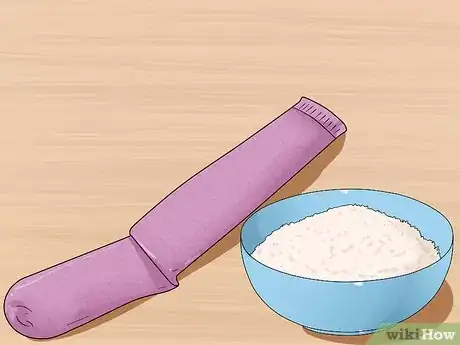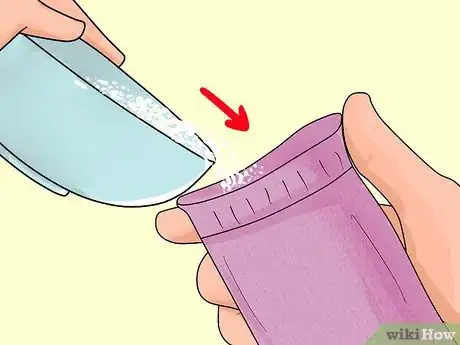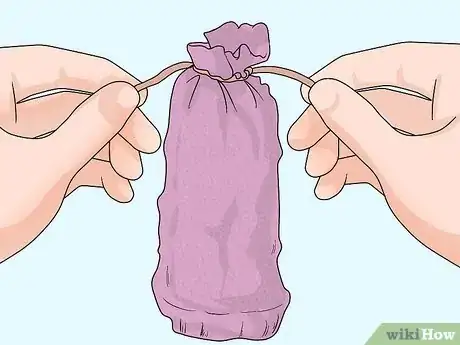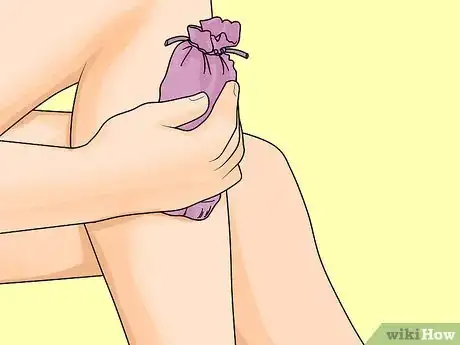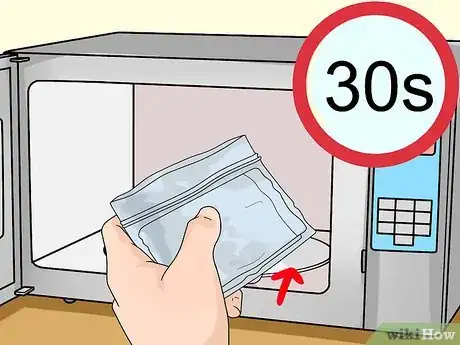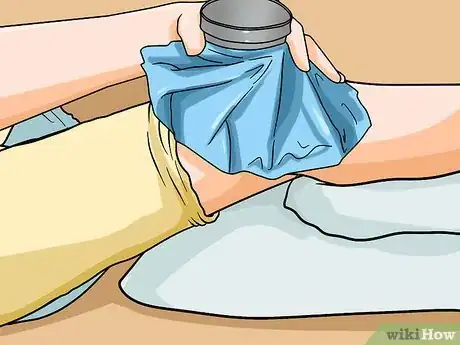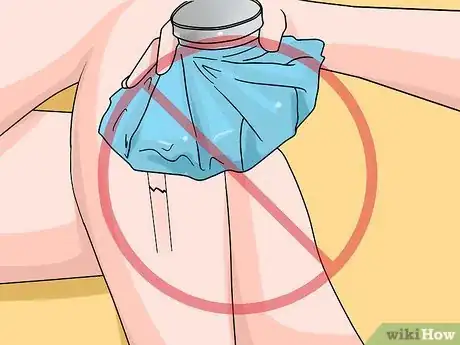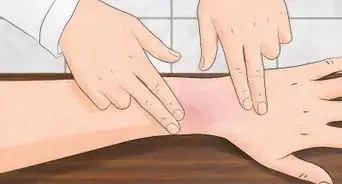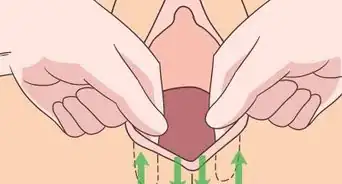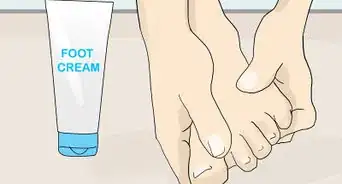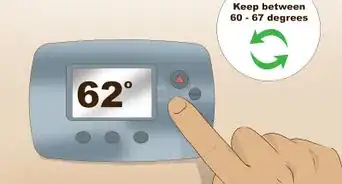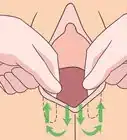This article was medically reviewed by Luba Lee, FNP-BC, MS. Luba Lee, FNP-BC is a Board-Certified Family Nurse Practitioner (FNP) and educator in Tennessee with over a decade of clinical experience. Luba has certifications in Pediatric Advanced Life Support (PALS), Emergency Medicine, Advanced Cardiac Life Support (ACLS), Team Building, and Critical Care Nursing. She received her Master of Science in Nursing (MSN) from the University of Tennessee in 2006.
There are 13 references cited in this article, which can be found at the bottom of the page.
wikiHow marks an article as reader-approved once it receives enough positive feedback. This article received 20 testimonials and 85% of readers who voted found it helpful, earning it our reader-approved status.
This article has been viewed 1,708,534 times.
Warm compresses can be used to treat a variety of issues, from muscle soreness to joint stiffness. While you can buy heat packs at the pharmacy, it's just as easy to make one yourself with simple, cheap materials you probably already have laying around your house. Warm compresses can help to reduce pain from menstrual cramps, abdominal muscle cramps, and muscle spasms.[1] Before treating a condition with a warm compress, make sure you know whether your medical issue is best treated by the application of heat or cold, and make sure you take the proper safety precautions to protect yourself from potential burns.
Steps
Making a Fragrant Warm Compress
-
1Gather your materials. All you need for the basic compress is a clean tube sock and some dry, uncooked rice, beans or oats to go inside it. However, if you want to give the compress a pleasant fragrance, you’ll also need a little bit of powdered peppermint, cinnamon, or whichever aroma you’d prefer. You can use some herbs from your kitchen, the contents of an herbal tea bag or essential oils.[2] [3]
- Try adding relaxing lavender, chamomile, sage, or mint to your compress for an even more soothing experience.
-
2Fill the tube sock. Whether you’re using the rice, beans, or oats, pour them into the tube sock until it’s mostly full—about ½-¾ full. Just leave enough sock material on the end to tie a knot, unless you plan on sewing the end of the sock to make a permanent warm compress. Then you can fill it nearly to the top.[4]
- As you fill the sock, you can add small pinches of your fragrant powder or herbs so there will be a pleasant aroma throughout the compress.
Advertisement -
3Seal the open end of the tube sock. Depending on how long you want to keep your compress, you can seal the sock temporarily or permanently. Tying a firm knot into the sock will keep the contents in place for a short period of time, but let you reuse the sock later. You can also sew the open end of the sock together for a more permanent compress.[5]
- Note that sealing the sock very close to its contents will make for a hard compress, while sealing it far away will leave its contents loose. Experiment a little bit with how hard or soft you want the compress to feel before sealing it.
- If you leave the contents a little looser, you can drape the sock easily over your neck and shoulders to treat pain there.
-
4Microwave the compress. After you have sealed your compress, microwave it for 30 seconds. After 30 seconds you can feel it and see how warm it is. If you are happy with the level of warmth, you can take it out and use it. If you want it to be warmer, continue microwaving the compress in increments of 10 seconds until the compress is as warm as you’d like it to be.[6]
- Remember that placing scalding hot materials against your skin can cause blisters and burns. A range between about 70 and 80°F (21.1 to 26.7°C) is optimal.[7]
-
5Place a barrier between your skin and the compress. You can wrap the compress or place a towel or t-shirt on your skin where you plan to use the heat. This will prevent skin damage or burning. Make sure you check your skin every few minutes to make sure your skin is still in good shape.
-
6Place the compress against your skin. If it feels uncomfortably hot, remove it right away and wait for the compress to cool a bit before replacing it. When the compress has reached a comfortable temperature, hold the compress to the sore area for ten minutes. After ten minutes, remove it to let the skin cool down a bit. After allowing your skin to cool down, you can reapply it for another ten minutes if you wish.
- If your skin starts to look dark red, purplish, spotty red and white, blistered, swollen or you develop hives, call your doctor. You may have skin damage from the heat.[8]
Making a Steamed Warm Compress
-
1Moisten a clean washcloth. Run water over the washcloth until it’s saturated with water. It should be dripping wet. Then place the cloth in a resealable plastic bag (like a Ziploc bag). Fold the cloth neatly to ensure it will heat up evenly when you put it in the microwave. Do not seal the bag yet at this point.
-
2Microwave the bagged washcloth. With the bag left open, place the bag and towel in the center of the microwave. Heat on high for 30–60 seconds, adding time in 10-second increments until it reaches the temperature you’re looking for.
-
3Use a kettle as an alternative. If you don’t have a microwave or feel uncomfortable microwaving plastic, you can simply heat some water up in a kettle on the stovetop. Place the washcloth into a bowl and pour the boiling water over the washcloth. Then use tongs to insert it into the plastic bag.
- You can also apply the warm cloth directly to your skin if you want to get some moist heat, but you must be extremely careful that the compress is not too hot. This type of warm compress is helpful for sinus pain, but be aware of the risk of burns.[9]
-
4Be careful when handling the plastic bag. Because the washcloth was saturated in water, there may be scalding hot steam coming from the plastic bag. Exercise caution when removing the bag and washcloth from the microwave to prevent burns — hot steam can seriously burn the skin even if you don’t get direct contact with the hot object.[10]
- Use a pair of kitchen tongs to handle the materials if they’re too hot to touch.
-
5Seal the washcloth into the bag. When you’ve microwaved the wet washcloth to your ideal temperature, you want to seal the steam and heat into the bag to prevent it from cooling too rapidly. Again, be careful not to burn yourself — steam can cause severe burns and it is absolutely essential that you protect yourself. Cover your fingertips with another washcloth or a pair of oven mitts to protect your skin when sealing the bag.
-
6Wrap the plastic bag in a clean towel. You don’t want to apply the hot plastic directly to your skin, so use a clean towel as a protective barrier. Place the plastic bag in the center of the towel, then fold the towel around the heated material. Do so in a way that prevents the bag from sliding out of the towel, and only leaves a single layer of towel between the heat and your skin.
-
7Place the wrapped compress against your skin. Allow the compress to cool if it feels uncomfortably warm. Remember to give your skin a break from the heat every ten minutes, and don’t apply the compress for longer than 20 minutes.
- If your skin starts to look dark red, purplish, spotty red and white, blistered, swollen or you develop hives, call your doctor. You may have skin damage from the heat.[11]
Determining When to Use a Warm Compress
-
1Apply heat to sore muscles. Sore muscles are often the result of excessive lactic acid buildup in the muscle tissue.[12] When you use a warm compress on a sore muscle, the heat draws more blood to that area.[13] The increased circulation flushes away excessive lactic acid, making your muscles feel less sore. It also brings more oxygen to the area, speeding up the healing process for damaged tissue. The warm sensation can distract the nervous system, decreasing the amount of pain signals sent to the brain.[14]
-
2Use moist heat to treat muscle spasms. If you experience prolonged muscle spasms, your first step is to rest the affected muscle. Take it easy, and avoid the activity that stressed your muscle to the point of spasm in the first place. Wait 72 hours to apply heat, letting any inflammation in the area diminish. After the three days have passed, apply a moist warm compress to the affected area to speed up the healing process.
-
3Treat joint stiffness and arthritis pain with either heat or cold. Both methods can be effective in treating joint issues, though some people prefer one over the other. You might try alternating between the two until you figure out which one works better for you.
- Cold ice packs numb the soreness you feel and reduce inflammation and swelling in your joints by constricting your blood vessels. Though extreme cold can be uncomfortable at first, it’s very useful for numbing acute pain.
- Warm compresses dilate the blood vessels, increasing blood flow that speeds up the healing process. The heat also loosens the tissues and ligaments in the stiff area, increasing their range of movement.[15]
- You can also apply heat by soaking the affected area in warm water. This might mean swimming in a heated pool or simply soaking in a warm bath.
-
4Avoid heat therapy if you suffer from certain conditions. Pregnancy, diabetes, poor circulation, and heart disease (like high blood pressure) can respond poorly to heat therapy. Talk to your doctor before using a warm compress to ease muscle or joint pain.[16]
- You should always keep a layer of cloth between the heat source and your skin to prevent burns.
-
5Do not use heat for acute injuries.[17] Heat is best used to treat chronic issues, like ongoing muscle soreness, spasming, or chronic joint pain. Cold, on the other hand, is better for use immediately after an acute injury like a sprained joint. So, if you pull a muscle, apply ice immediately to reduce the swelling within the first 48 hours. If the pain persists for several days, use heat to speed up the recovery process.
Warnings
- Do not microwave the compress for more than a minute as it will become scorching hot and can melt the baggie.⧼thumbs_response⧽
- Remove the compress if it becomes uncomfortable. It is supposed to feel good.⧼thumbs_response⧽
- Do not allow a warm compress to lie in the same area too long as it can burn. Shift it around slightly every couple of minutes while you are relaxing.⧼thumbs_response⧽
- Never use warm compresses on children and babies.⧼thumbs_response⧽
Things You'll Need
Method 1
- Clean tube sock
- Enough dry, uncooked rice, beans or oats to fill the sock halfway
- Scent powder or essential oil of your choice (optional)
- Microwave
- Towel
Method 2
- A washcloth
- Water
- A microwave or kettle
- A plastic baggie with a zip closure
- A dry towel or pillowcase
- Tongs
References
- ↑ http://emedicine.medscape.com/article/1833084-overview#a2
- ↑ http://everydayroots.com/how-to-make-your-own-hot-or-cold-compress
- ↑ https://www.achs.edu/blog/2011/01/06/compresses-effective-way-use-essential-oils-0
- ↑ http://everydayroots.com/how-to-make-your-own-hot-or-cold-compress
- ↑ http://everydayroots.com/how-to-make-your-own-hot-or-cold-compress
- ↑ http://everydayroots.com/how-to-make-your-own-hot-or-cold-compress
- ↑ http://emedicine.medscape.com/article/1833084-overview#a15
- ↑ http://www.webmd.com/pain-management/try-heat-or-ice
- ↑ http://www.webmd.com/eye-health/tc/warm-compresses-for-eye-problems-topic-overview
- ↑ http://www.webmd.com/first-aid/tc/burns-topic-overview
- ↑ http://www.webmd.com/pain-management/try-heat-or-ice
- ↑ https://www.scientificamerican.com/article/why-does-lactic-acid-buil/
- ↑ http://www.medscape.com/viewarticle/533674
- ↑ http://www.spine-health.com/treatment/heat-therapy-cold-therapy/benefits-heat-therapy-lower-back-pain
- ↑ http://www.webmd.com/arthritis/heat-and-cold-therapy-for-arthritis-pain
- ↑ http://www.medscape.com/viewarticle/533674
- ↑ https://www.marshfieldclinic.org/sports-wrap/ice-or-heat
About This Article
To make a warm compress, moisten a clean washcloth, then fold the cloth neatly and place it into a resealable plastic bag. With the bag left open, microwave the cloth for 30-60 seconds, then carefully remove it from the microwave and seal the bag. Wrap the plastic in a clean towel and place the wrapped compress against your skin. For tips from our medical reviewer on when to use a warm compress, keep reading!
